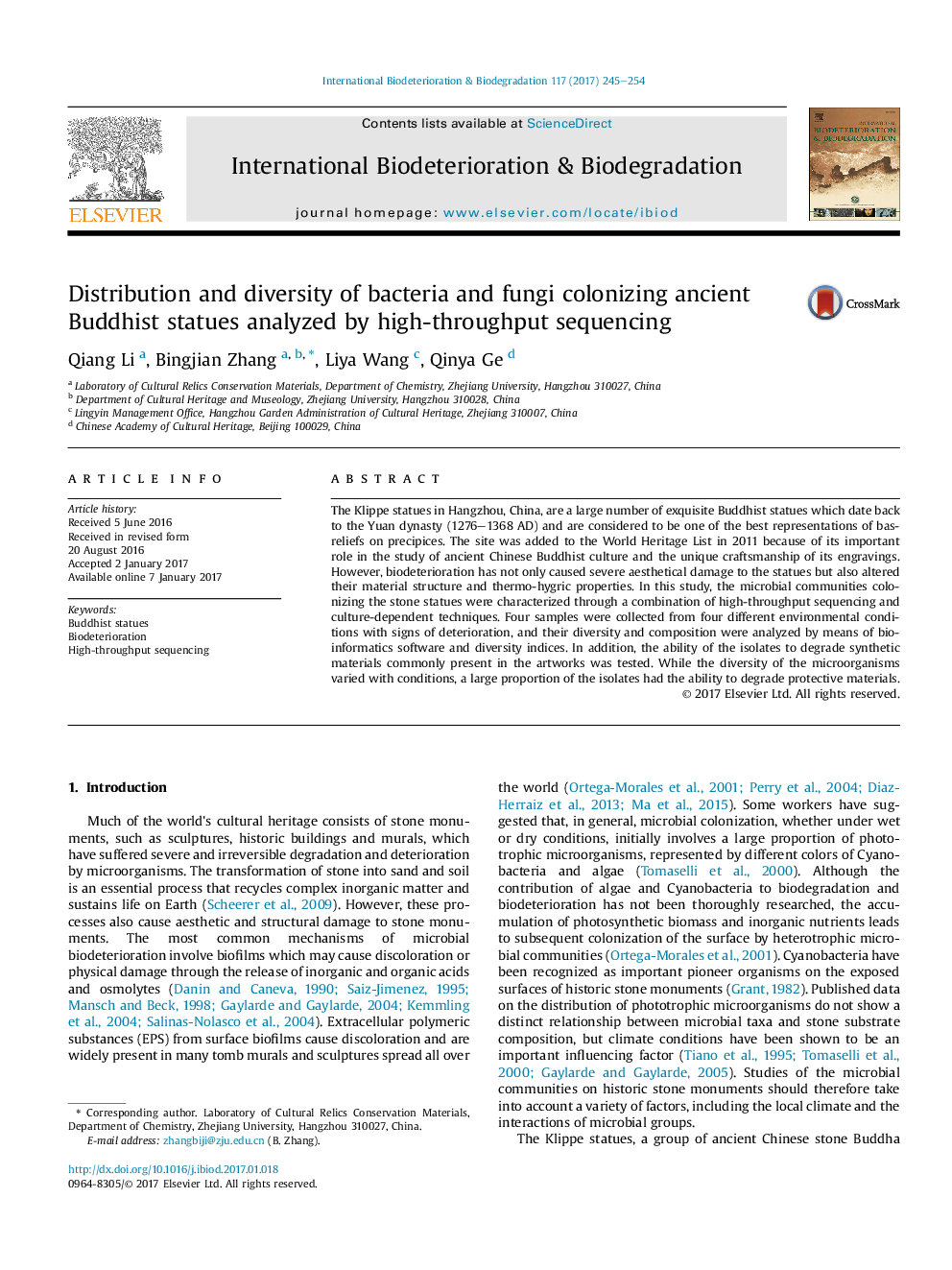| Article ID | Journal | Published Year | Pages | File Type |
|---|---|---|---|---|
| 5740525 | International Biodeterioration & Biodegradation | 2017 | 10 Pages |
â¢The microbial communities colonizing the stone statues were isolated and characterized.â¢The diversity and composition of four samples were analyzed by high-throughput sequencing and culture-dependent techniques.â¢The ability of the isolates to degrade synthetic materials commonly present in the artworks was tested.
The Klippe statues in Hangzhou, China, are a large number of exquisite Buddhist statues which date back to the Yuan dynasty (1276-1368 AD) and are considered to be one of the best representations of bas-reliefs on precipices. The site was added to the World Heritage List in 2011 because of its important role in the study of ancient Chinese Buddhist culture and the unique craftsmanship of its engravings. However, biodeterioration has not only caused severe aesthetical damage to the statues but also altered their material structure and thermo-hygric properties. In this study, the microbial communities colonizing the stone statues were characterized through a combination of high-throughput sequencing and culture-dependent techniques. Four samples were collected from four different environmental conditions with signs of deterioration, and their diversity and composition were analyzed by means of bioinformatics software and diversity indices. In addition, the ability of the isolates to degrade synthetic materials commonly present in the artworks was tested. While the diversity of the microorganisms varied with conditions, a large proportion of the isolates had the ability to degrade protective materials.
